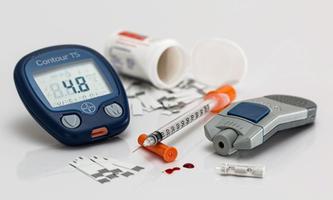All about Childhood Asthma Control
- By
- Dr Abhijeet Sharan
- September-07-2021
Playing catch is something many kids do without a second thought. But if your child has asthma, catching a breath without coughing, wheezing or feeling tight in the chest may be harder to do than catching a ball.
* Give you a written asthma action plan that spells out what to do every day to control your child’s asthma and how to handle symptoms or asthma attacks.
* Check your child’s asthma control at regular visits and adjust medication as needed to keep your child’s asthma in control.
* Schedule regular follow-up visits (at least every six months).
* Work with you to identify your child’s asthma triggers, like tobacco smoke, dust or pet dander, and help your child avoid them.
* Ask before you leave the doctor’s office or pharmacy for someone to show you and your child how to use each prescribed medication and device correctly.
“When at school, at home or elsewhere, children need to know how to use their asthma devices properly so that their medications can have the greatest benefit,” said James P. Kiley, Ph.D., director of the NHLBI Division of Lung Diseases.
A recent study of 8- to 16-year-olds with asthma revealed that most did not perform all of the key steps when using a metered-dose inhaler, dry powder inhaler, peak flow meter or other asthma device.
“We found that very simple steps were being missed,” said Betsy Sleath, Ph.D., the study’s lead author. She added that parents and patients shouldn’t be shy about asking for help. Their doctor, nurse, asthma educator, or pharmacist can help by showing the proper technique, giving feedback on a patient’s technique and answering questions.
* Give you a written asthma action plan that spells out what to do every day to control your child’s asthma and how to handle symptoms or asthma attacks.
* Check your child’s asthma control at regular visits and adjust medication as needed to keep your child’s asthma in control.
* Schedule regular follow-up visits (at least every six months).
* Work with you to identify your child’s asthma triggers, like tobacco smoke, dust or pet dander, and help your child avoid them.
* Ask before you leave the doctor’s office or pharmacy for someone to show you and your child how to use each prescribed medication and device correctly.
“When at school, at home or elsewhere, children need to know how to use their asthma devices properly so that their medications can have the greatest benefit,” said James P. Kiley, Ph.D., director of the NHLBI Division of Lung Diseases.
A recent study of 8- to 16-year-olds with asthma revealed that most did not perform all of the key steps when using a metered-dose inhaler, dry powder inhaler, peak flow meter or other asthma device.
“We found that very simple steps were being missed,” said Betsy Sleath, Ph.D., the study’s lead author. She added that parents and patients shouldn’t be shy about asking for help. Their doctor, nurse, asthma educator, or pharmacist can help by showing the proper technique, giving feedback on a patient’s technique and answering questions.
(All rights reserved to NewsUSA.)





